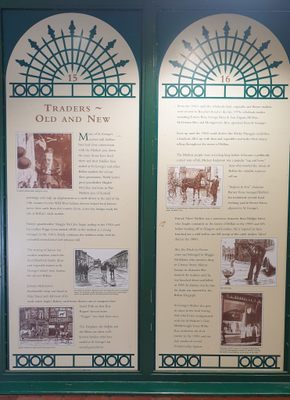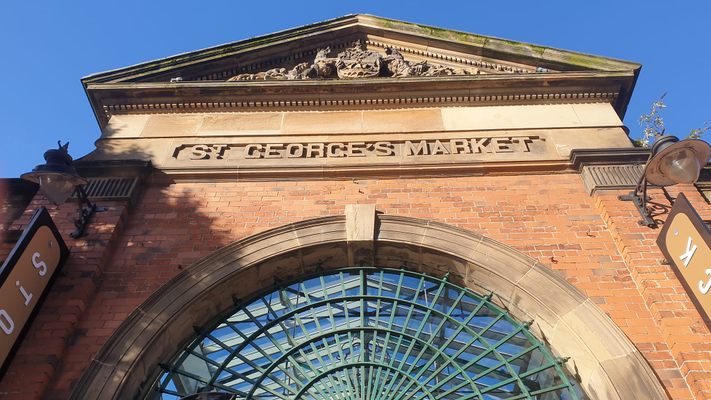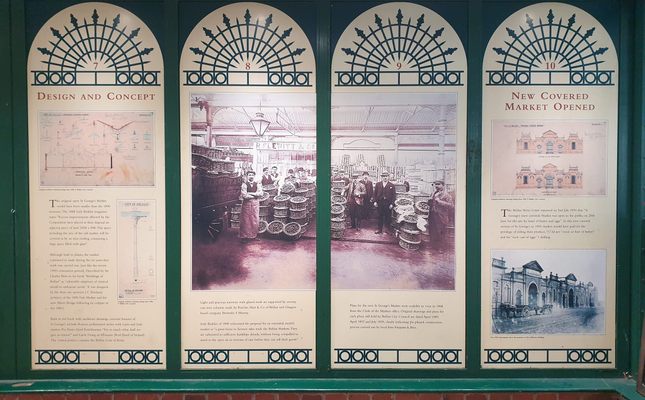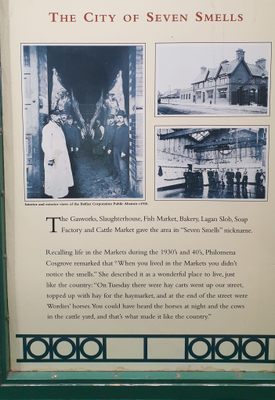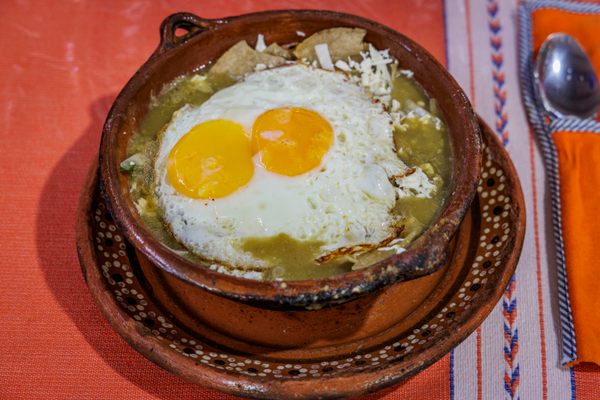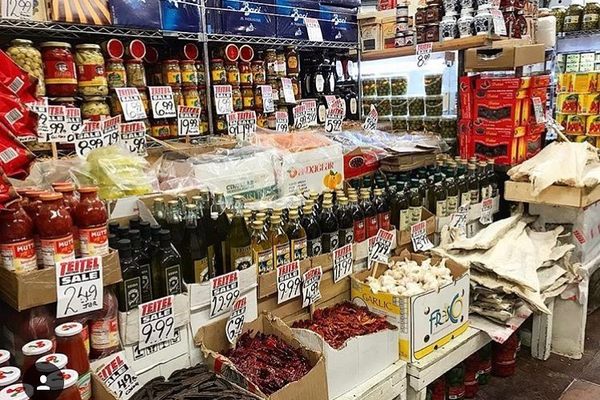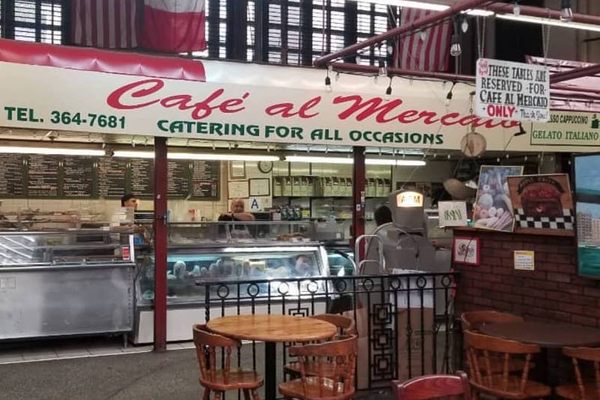About
Likely named after the nearby church, St. George’s market was much smaller during its earlier years. Today, nearly 250 stalls, many of them generational family businesses, serve locals and tourists alike.
Comprised of red brick with sandstone dressing, the market also features Roman pedimented arches. Written across the arches are Latin and Irish mottos that read: "pro tanto quid retribuamus," meaning “for so much what shall we give in return?” While the Irish one reads, "lámh dearg na hÉireann" which translates to “Red Hand of Ireland." Additionally, the main entrance central portico features the Belfast coat of arms.
After heavy bombing campaigns during World War II, St. George’s Market was used as an emergency mortuary for 255 of the city’s more than 700 victims. Not all of the bodies were able to be identified, so a public funeral was held for the unclaimed remains on April 21, 1941. Separate Catholic and Protestant services were held at the market, and the streets were lined with thousands of people as processions made their way to the respective cemeteries.
The market's appearance today is due in large part to a multi-million-pound restoration that repaired the brick and stonework in the late 1990s. Many of the bricks were unusually sized and had to be produced in England. The distinctive holly green colors were repainted, and Bangor blue slate was reinstated from past designs
For a good overview of what the market has to offer, visit on a Sunday. You’ll find stalls selling everything from Irish-caught fish and antiques to fresh fruit, books, soaps, and paintings.
Bring your appetite as well, as the market is also a smorgasbord of international foods—often with an unexpected Irish twist. For a hyperlocal experience, buy a bag of dulse. The red, dried seaweed is snacked on like crisps by some and absolutely avoided by others.
Or perhaps you fancy a Belfast Bap, a huge bread roll filled with your choice of egg, bacon, mushrooms, and more is a popular choice among market-goers. And for those with a sweet tooth try some yellowman, a chewy, toffee-type of honeycomb, you can find at the Aunt Sandra’s Candy Factory.
Keep an eye out for charming surprises like dusty cassette tapes and 8-tracks for sale, and be sure to check out the strange, white-eyed blackfish under the restored clock found in the market. A magnificent wonder of weights, cogs, chains and a bell, the clock was originally constructed in 1821 and had been lost for years. It was discovered in the basement of city hall during the 1980s. It was painstakingly repaired and restored using an unused bell from the nearby Smithfield Market. There’s a special mechanism in the clock that ensures the regular strikes won't interrupt concerts and events.
Related Tags
Know Before You Go
Opening hours: Friday 6 a.m. – 3 p.m., Saturday 9 a.m. – 3 p.m., and Sunday 10 a.m. – 4 p.m. The entrance off Oxford Street, (East Side) which can be accessed from the interior as well as the exterior, contains several panels that give the history of the market from inception to the present day. These include photographs and amusing anecdotes.
Published
September 18, 2019


